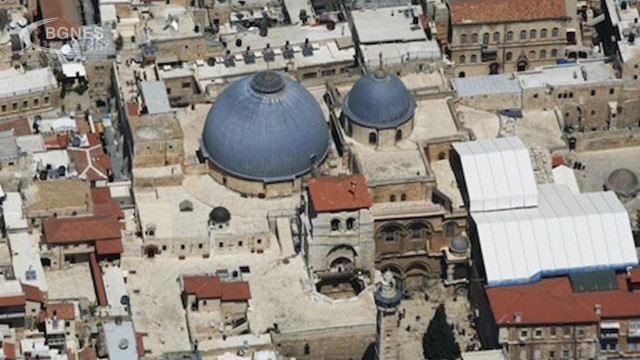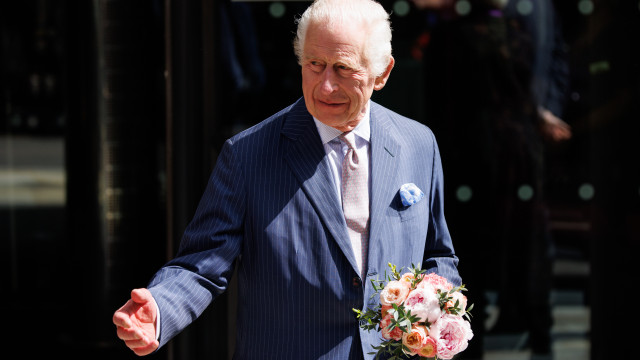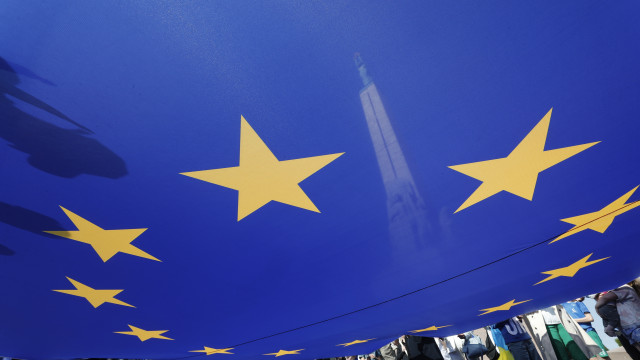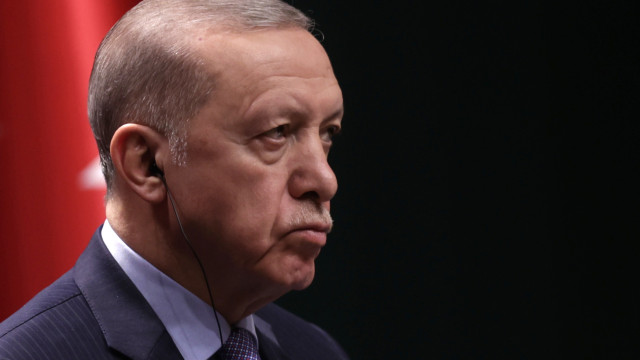Great Easter Sunday: Resurrection of the Lord Jesus Christ
Gospel of Matthew 28:1-11; 16 - 20
And when the Sabbath had passed, at dawn, on the first day of the week, Mary Magdalene and the other Mary* came to see the tomb. And behold, there was a great earthquake: for an Angel of the Lord came down from heaven, came, rolled away the stone from the door of the tomb and sat on it; his appearance was like lightning, and his garment white as snow; and the guards, afraid of him, trembled and became as dead. The angel turned to the women and said to them: do not be afraid; I know you are looking for the crucified Jesus; it is not here; He rose as he had said; come, see the place where the Lord lay, and come quickly, and tell His disciples that He has risen from the dead, and behold, He is going ahead of you into Galilee; there you will see Him. There, I told you. And coming out of the tomb quickly, they ran with fear and great joy to tell His disciples. And when they were going to tell His disciples, behold, Jesus met them and said: REJOICE! And they approached, took hold of His feet, and worshiped Him; then Jesus says to them: do not be afraid; go and tell My brothers to go to Galilee and there they will see Me.
As they were going, behold, some of the guard, entering the city, reported to the high priests all that had happened.
And the eleven disciples went to Galilee, to the mountain where Jesus had commanded them; and when they saw Him, they worshiped Him, and some doubted.
And when Jesus approached, he spoke: ALL AUTHORITY IN HEAVEN AND EARTH HAS BEEN GIVEN TO ME. Go therefore and teach all nations, baptizing them in the name of the Father and of the Son and of the Holy Spirit, and teaching them to observe all that I have commanded you, and behold, I AM WITH YOU ALL THE DAYS UNTIL THE END OF THE WORLD. AMEN!
Resurrection is the event in which the Lord Jesus Christ returns to life again after His death on the Cross. The greatest Christian holiday, also called the Bright Resurrection of Christ, was dedicated and glorified to this event. The depth of the meaning embedded in the Resurrection has been sought and discussed by many theologians in the past and now. Part of this depth is captured in the question: "What fate would humanity have if Christianity was not crowned with the Resurrection of its Founder Jesus Christ?" To him, St. Gregory of Nyssa, answers that without the Resurrection, humanity would be deprived of the most the main thing - the meaning and justification of its existence. If death was not conquered by Christ and life has an end, then for what purpose do we labor and accumulate knowledge, for what do we fight against evil and anomalies in the world around us? If the dead do not rise, if there is no eternity, then how are we humans above other creatures?! Or is our life exhausted by "waking up from sleep, eating and drinking, for tomorrow we will die and be no more?!" Belief in the eternity of life, in our resurrection as a personal event and understanding are not easy at all , because man is subject to the change, movement and transience of the world. In this difficulty of comprehending its depth, St. Athanasius the Great helps us, who asks the even more significant question: "who can and how can the mortality of today's man be defeated?" The saint is not afraid to see that once man is created by chaos, out of nothing, in it is planted the seed of death, and the act of the Fall makes death a part of our lives. Through sin, a person damages the physical part of himself, but his soul retains its most important abilities: to know and choose, because it has the knowledge of good and evil, through its free will, good instead of evil. Therefore, a person has the support in himself: not to damage and destroy his soul. Why is Christ's Resurrection possible? - because Christ's Conception is possible. It is a miracle not because it did not happen in the way we know - through the sacrament of "marriage" between a man and a woman, established after the Fall. It is a miracle, because by the will of God the Father, through the animating power of the Holy Spirit Himself, the birth of the sin-free Man in the person of Christ becomes possible. With His Resurrection, Christ defeated death not only for Himself, but for all of humanity. This means that through His sacrifice, He restores to us, humans, our original appearance as we were created: with a perfect body form and a perfect soul, because of which it is said that we are "the image and likeness of God." Because of everything listed so far, we can understand the words of Antoniy Surozhki that the Resurrection of Christ brings not only the human race out of the abyss of death.
This act has a life-affirming power and universal significance, because it restores the dignity of nature, the cosmos, matter through Christ, who contained both God and man. Available, visible matter acquires the highest moral status, and if this is understood, the opening verses of Genesis will also be understood, where after each day, the Lord concludes that "this is good, very good." Through the Resurrection of Christ, continues St. Anthony, everything tends to its complete restoration, to its perfect form, previously destroyed by death. It follows that the Kingdom of God is not an illusion, a mirage, the "new heaven and the new earth" are not stylistic concepts and that God becomes the God of everything and everyone, and the Psalmist had reason to exclaim: "let every breath praise the Lord" (Ps . 150). The tracing of the process of establishing the time and order of the celebration of the Resurrection of Christ in a very thorough way in the Bulgarian theological literature was studied by Archimandrite Avksentii. The two moving holidays - Resurrection and Pentecost - have served as the basis of the annual holiday cycle of our Orthodox Church. Only these two holidays have their precedent in the Old Testament: the Resurrection in Passover (the Exodus of the Jews from Egypt - "the land of slavery") and Pentecost (the Ten Commandments of God given to the Jews by the Lord through the prophet Moses). St. John Damascene also wrote about the extraordinary significance of the Resurrection of Christ in his Canon for Passover, calling it "the feast of feasts and the celebration of feasts", because if the Old Testament Passover celebrates the Jews' passage of the Red Sea, their deliverance from Egyptian captivity and their entry into the "land of freedom", the New Testament Passover is loaded with the following deep saving meaning: the Son of God brings the entire human race from death to life through His Resurrection. As early as 325, at the First Ecumenical Council in Nicaea, the time of the celebration was established of Resurrection: the first Sunday after the first full moon after the vernal equinox. This calculation from then until today has been entrusted to the bishops of the Church of Alexandria. Finally, I will conclude with the words of Archimandrite Auxentius: "The Resurrection of Christ is the seal and the end of the entire redemptive feat of the God-man. The Resurrection of Christ contains the entire New Testament gospel, filled with unconditional faith and bright optimism for our salvation. And it is given to us by the Lord Jesus Christ Himself, who tells us: "I am the resurrection and the life; whoever believes in me, even if he dies, will live" (John 11: 25). Maria, Jacob's mother is already mentioned Maria Kleopova above. She is the wife of the younger brother of St. Joseph the Bridegroom. The two and the Holy Mother of God lived in the same house for a long time and were very close to each other. Maria Kleopova stood by the Holy Mother of God steadfastly during the condemnation, reviling, crucifixion and resurrection of Christ. Salome was the mother of the two apostles Jacob and John the Theologian. She is also among the first women to believe in Christ. She accompanied Him and helped Him throughout His travels in Palestine. She was present at the Crucifixion and was one of the female myrrh-bearers. /BGNES
----------------------
Sonia Zafirova, philosopher. The text, which was specially provided to BGNES, is part of the book "Christ's light enlightens all", which is about to be published.







